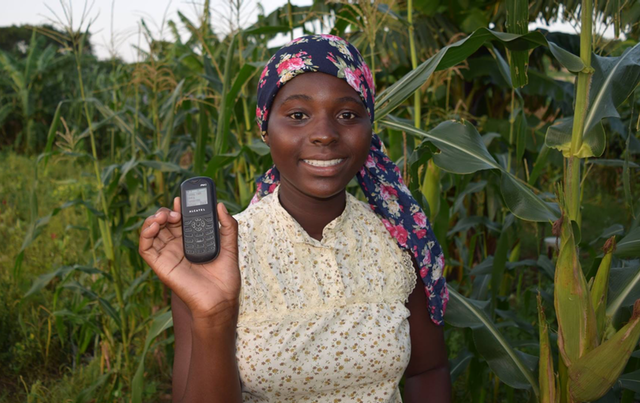
What is e-Agriculture Strategy?
An e-Agriculture strategy is using innovative digital technology solutions like precision agriculture, drones, big data, predictive analytics, and blockchain to improve social and economic outcomes for smallholder farmers.
e-Agriculture programs aim to increase food security by helping smallholder farmers improve modern ICT4Ag farming methods and access to markets. Agricultural ICT4D strategies encompass the full agricultural value chain and includes adjacent technologies like digital financial services and geographic information systems.
Communication in Agriculture
Smallholder farmers have limited knowledge, services, and technologies available to them. They typically need support to adopt modern farming methodologies.
Agriculture technology solutions focus on extension services for farmers to adopt new technologies and innovation. ICTs can amplify the efforts of the extension agents to help farmers plan what crops to grow, source inputs for crop cultivation, and selling their produce in local market.
Chatbots offer an exciting opportunity for governments to engage farmers on the social media platforms where farmers already congregate. For example:
- Facebook chatbots are a popular way to answer basic questions or help farmers apply for government support services.
- SMS text message chatbots can also help private sector companies develop new business leads and educate extension agents on their services.
ICT communication tools can play a crucial role in supporting farmers to access new inputs, credit, and markets with personalized and customized services.
Examples of e-Agriculture Programs
The potential to achieve high impact at the farm-level requires appropriate technology and adoption methodologies. International development organizations can use e-Agriculture communication programs like those below to support ICTforAg value chain ecosystems in developing countries.
Published on: Apr 15 2015 by Wayan Vota - Comments Off on You Are Invited to Participate and Present at ICTforAg on June 3rd
ICTforAg: New Technologies for Smallholder Farmer Value Chains is a 1-day conference that will bring together +150 thought leaders and decision makers in agriculture...
Published on: Dec 24 2014 by Guest Writer - Comments Off on Transactional Data: How Mobile Network Operators Leverage Data for Better Service and What It Means for M&E
Mobile for Development Impact were delighted to support the recent M & E Tech events in Washington D.C and New York. We see our role as catalysing the creation...
This Assessment of Market Information Systems in Africa briefing paper presents the results of an assessment carried out to explore the current use of sustainable...
The Zambian Ministry of Agriculture and Livestock recently announced that they are experiencing an outbreak of maize-eating fall armyworm in some parts of the country....
Published on: Nov 16 2012 by Josh Woodard - Comments Off on USAID Practitioners Toolkit: Interactive Radio for Agricultural Development Projects
For decades now, radio has been a dominant source of information for farmers in much of sub-Saharan Africa. Although the reach of radio varies from country to country,...
I am a big fan of FM radio. From my days at IESC Geekcorps, I saw how this “old” technology was still impressive in its reach, cost-effectiveness,...
The mere mention of agriculture conjures, for many, outmoded images of a backbreaking industry. It’s an image that holds true in some places where few farmers...
It was a normal day by Accra standards. I walked out of the house ready to make my way to the center of town for an interview with a homegrown tech company; Esoko....
Published on: Sep 28 2011 by Tyrone Hall - Comments Off on iPads in Rural Agriculture: Glitz Toys or ICT4Ag Business Tool?
This month’s Technology Salon ICT4Ag – Enriching rural coffee farmers via iPads raised a couple of eyebrows from the outset. How can Exprima Media and...
The Grameen Foundation Center launched a comprehensive Android phone-based project for Ugandan smallholder farmers recently, that could significantly improve farming...











